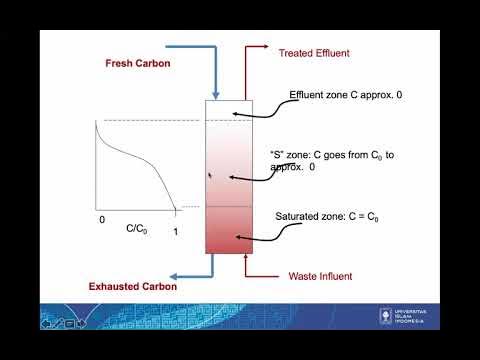Surface Area Analysis of Carbon Materials
Summary
TLDRThis lecture delves into characterizing carbon materials through Surface Area Measurement using Gas Adsorption Isotherm, emphasizing its importance in activated carbons and porous carbons. It touches on various characterization techniques like TEM, Raman spectroscopy, and X-ray diffraction, crucial for assessing crystallinity. The discussion highlights the significance of surface area and porosity, explaining how they relate to material applications, particularly in adsorption. The lecture also introduces different gas adsorption isotherm shapes and methods for calculating surface area, such as the Langmuir and BET equations, and addresses challenges in interpreting isotherm data due to factors like closed porosity and thermal spikes.
Takeaways
- 🔬 Surface Area Measurement using Gas Adsorption Isotherm is a crucial technique for characterizing carbon materials, especially for porous ones like activated carbons and carbon black.
- 🧬 Techniques like Transmission Electron Microscopy (TEM), Raman Spectroscopy, and X-ray Diffraction are essential for characterizing carbon materials due to their focus on crystallinity.
- 🌐 Surface area and porosity are closely related, but not all induced porosity results in increased surface area; it depends on the accessibility of the pores from the surface.
- 🔍 Gas adsorption isotherms are a common method to measure surface area, where inert gases like nitrogen or argon are used to avoid chemical reactions with the carbon material.
- 🌡️ Low temperatures, often using liquid nitrogen, are employed during gas adsorption isotherm measurements to minimize molecular motion and ensure physical adsorption.
- 📈 The shape of the gas adsorption isotherm can provide insights into the pore size distribution and the type of porosity present in the carbon material.
- 📊 The BET (Brunauer-Emmett-Teller) equation is widely used for calculating the surface area from gas adsorption isotherms, offering relative values that are useful for comparing different carbon materials.
- 🔬 Other characterization techniques like SEM imaging, mercury porosimetry, and X-ray microtomography (MicroCT) can provide additional insights into the porosity and structure of carbon materials.
- 📚 Understanding the calculation methods and assumptions behind surface area measurements is vital for accurate interpretation of results and comparison of different carbon materials.
- 🔍 The physical structure of the carbon material, such as whether it's a bulk material or has a specific micro-nano scale pattern, influences the pattern of porosity and surface area.
Q & A
What is the main focus of the lecture?
-The lecture primarily focuses on the characterization technique of Surface Area Measurement using Gas Adsorption Isotherm, especially in the context of carbon materials.
Why are techniques like TEM, Raman spectroscopy, and X-ray diffraction important for carbon materials?
-These techniques are important as they help in assessing the crystallinity of carbon materials, which is crucial for understanding their properties, particularly in graphitic carbon materials.
When does surface area measurement become particularly important in carbon materials?
-Surface area measurement becomes crucial when dealing with activated carbons, porous carbons, or carbon black, where porosity and surface area play a significant role in their functionality.
What is the relationship between surface area and porosity?
-Surface area and porosity are closely related, but not synonymous. While porosity refers to the volume of pores, surface area refers to the 2D area. An increase in porosity can lead to an increase in surface area if the pores are accessible from the surface.
What is the significance of measuring both surface area and pore size distribution in carbon materials?
-Measuring both surface area and pore size distribution is significant because it helps in understanding the material's performance in applications such as adsorption, where the accessibility and type of pores can influence the material's effectiveness.
What is the principle behind gas adsorption isotherms for measuring surface area and porosity?
-The principle involves using inert gases like nitrogen or argon that physically adsorb onto the surface of the carbon material. The change in gas pressure is measured to determine the amount of gas adsorbed, which correlates with the surface area and porosity of the material.
Why are inert gases used in gas adsorption isotherms?
-Inert gases are used to ensure that the adsorption process is physical and not chemical, avoiding reactions between the gas and the carbon material's surface properties.
What are some of the challenges in interpreting gas adsorption isotherms for carbon materials?
-Challenges include the dynamic nature of gas adsorption, potential multilayer adsorption instead of monolayer, and the presence of different functional groups on the carbon surface that might affect adsorption behavior.
What are the common calculation methods used to determine surface area from gas adsorption isotherms?
-Common calculation methods include the Langmuir equation, BET equation, and Dubinin-Radushkevitch equation, each with its assumptions and suitable for different types of materials and porosities.
How can SEM imaging be used to estimate porosity in carbon materials?
-SEM imaging can provide a top view of the material's surface, allowing for image processing and histogram plotting to estimate the surface covered by pores. Additionally, cross-sectional imaging can provide insights into the depth and connectivity of pores.
Outlines

此内容仅限付费用户访问。 请升级后访问。
立即升级Mindmap

此内容仅限付费用户访问。 请升级后访问。
立即升级Keywords

此内容仅限付费用户访问。 请升级后访问。
立即升级Highlights

此内容仅限付费用户访问。 请升级后访问。
立即升级Transcripts

此内容仅限付费用户访问。 请升级后访问。
立即升级5.0 / 5 (0 votes)






